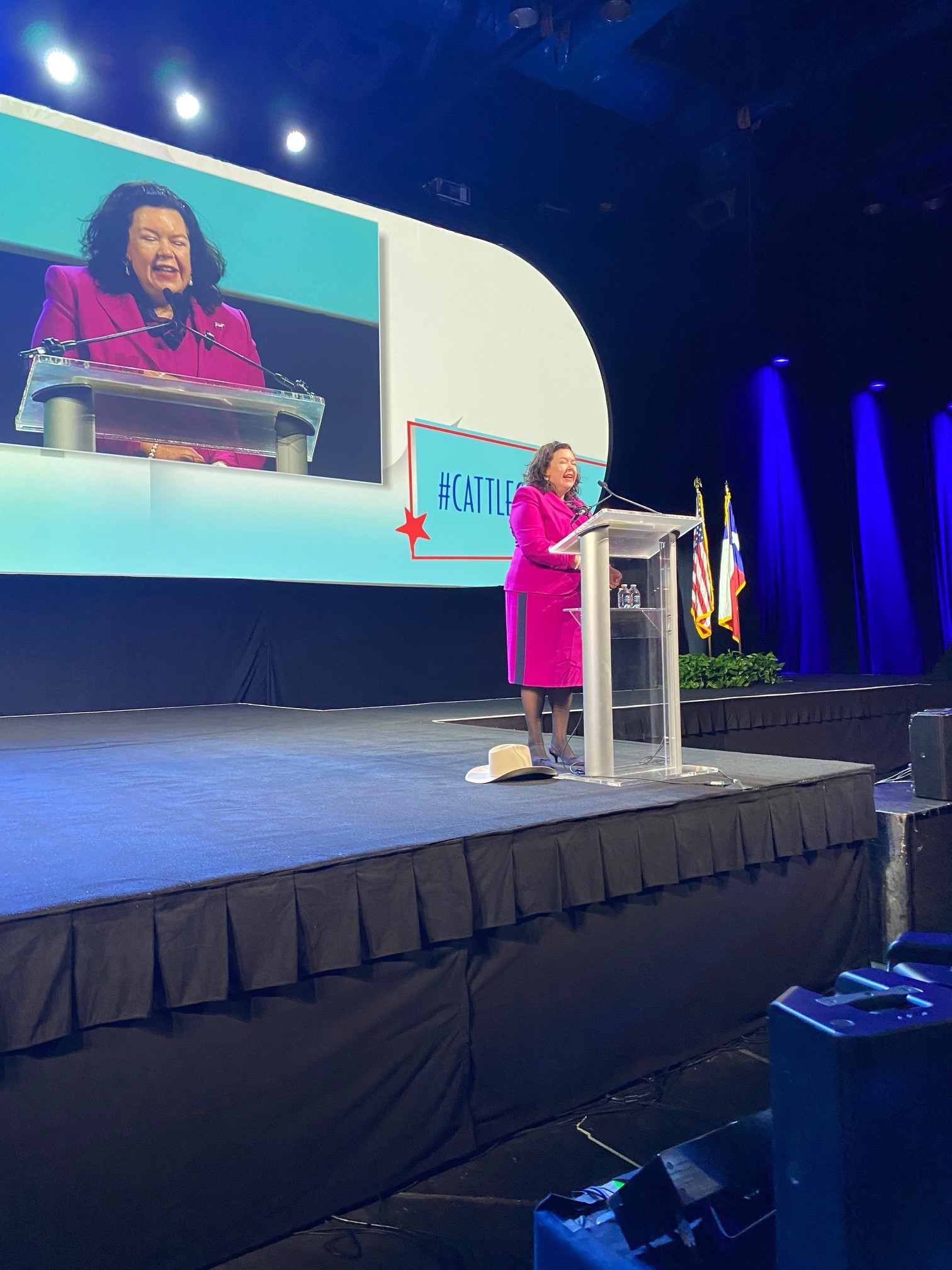



UK Ambassador: We’re “determined to strengthen relationship” with US agriculture
The international beef market is expanding and interconnecting at a rapid rate. Because of high tariffs via the European Union, trade between the U.S and a pre-Brexit United Kingdom was limited. Now, however, those channels have opened, presenting new opportunities for agricultural trade, writes Timothy Wier for The Cattle Site. Dame Karen Pierce, UK ambassador to the US, speaking at the 2022 NCBA Convention in Houston, Texas, USA
Dame Karen Pierce, UK ambassador to the US, speaking at the 2022 NCBA Convention in Houston, Texas, USADame Karen Pierce, UK ambassador to the United States, spoke at the 2022 National Cattlemen's Beef Association conference In February on the state of the market, trade and opportunities now presented in this new post-Brexit market.
The state of the US-UK relationship
The US and the UK have a special relationship, with the US exporting over $1.3 billion in agricultural products to the UK. According to Ambassador Pierce, “We have a common purpose in forging frameworks to deal with the challenges of the 21st century, whether they be climate, migration, health and pandemics or new technology.”
One of the major components of the US-UK relationship is what Ambassador Pierce referred to as “people-to-people links.” Essentially, these are relationships between US and British farming communities meant to encourage sharing of best practices and build trust. Every day, 1.3 million Americans go to work for British companies, and a similar number of Brits come to work in the US.
Given the UK’s recent exit from the EU, one of the top priority items in the US-UK relationship is negotiating a new trade agreement. When asked where that ranks in importance, Ambassador Pierce replied, “We are determined to strengthen this relationship further. It’s always good to have a more codified framework within which to take these dialogues about agricultural trade forward.”
UK hopes for international trade
As mentioned above, the UK has placed a high priority on negotiating trade agreements with her allies.
“Everyone knows that agriculture is a difficult subject for trade,” said the ambassador. “It is the issue on which many trade negotiations have floundered in the past. But we are determined to find a way through. We want to sell you our products as much as you want to sell us yours.”
That’s not to say that negotiating an agreement isn’t without its challenges. The US and UK have different agricultural standards, particularly around environmental regulation. Ambassador Pierce specifically mentioned the importance of US participation in sustainable agriculture, referencing the UK’s recent hosting to the COP26 climate summit in Glasgow late last year.
“I know the NCBA puts a lot of effort into its stewardship of the environment,” said the ambassador. “You have these vast grasslands; you have these stunning vistas. You understand the earth; you understand the land.”
One of the UK’s priorities is achieving a free trade agreement that takes their sustainable agriculture goals into account.
Sustainable agriculture: a 21st century priority
One of the emphases of the COP26 summit was the importance of improving farming methods, better delivering for consumers while stewarding the environment. In the UK, greenhouse gasses from beef comprises about half of their emissions—a figure which parallels the global average.
The challenge comes in the fact that US and UK agriculture industries have different approaches, both at the government level and the individual farming level. For example, the UK puts strict environmental regulations on their farmers, while the US does not. The question arises: how do both countries work past these differences for a mutually beneficial trade agreement?
“The best thing we can do is make sure we have enough transparency about the way things work,” said Ambassador Pierce. “Make sure that we understand each other’s systems.”
In terms of overcoming these challenges, two themes rang out above the rest: shared goals, and transparency. Both the US and UK have the same objectives: looking after the environment and stewarding the land. The challenge comes simply in understanding each other’s approach to this goal.
That’s where transparency comes in. US and UK people-to-people connections are one of the primary avenues for continuing this dialogue—especially when it comes to demonstrating the efficacy of the US ecological and conservation practices and the long-term impact those practices have on the environment.
What’s next for the US-UK trade relationship?
In terms of next steps, Ambassador Pierce reiterated the importance of getting free trade agreement negotiations underway.
“We need to find a way of lifting the tariffs,” she said, “And we need to study the deeper impact on what collaboration looks like for your operations and hear your priorities and how you want to develop these important areas of trade.”
Both countries agree on their common goals. They both affirm the priority of establishing a trade agreement.
Ambassador Pierce is one of the most accomplished British diplomats and the first woman to hold the position. She previously served as the UK Permanent Representative of the United Nations in New York.
NCBA was attended by more than 6,200 cattle producers and industry from 48 US states and 20 countries.
Headline image: Ambassador Pierce speaking to Ethan Lane, VP of Government Affairs at the National Cattlemen's Beef Association, at the NCBA Convention general session in Houston, Texas in February.TheCattleSite News Desk


